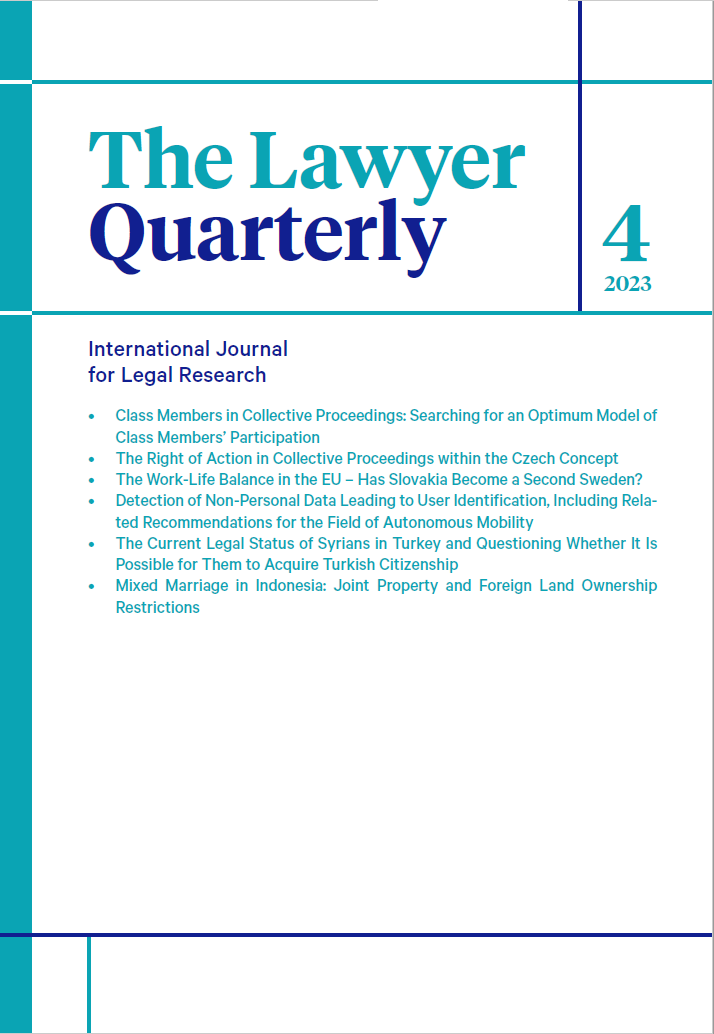DETECTION OF NON-PERSONAL DATA LEADING TO USER IDENTIFICATION, INCLUDING RELATED RECOMMENDATIONS FOR THE FIELD OF AUTONOMOUS MOBILITY
Main Article Content
Abstract
This paper introduces the issue of personal and non-personal data in autonomous vehicles. Its main objective is to provide a procedure for determining the processed and retained data, to explain the current legal regulation that must be met, and to propose appropriate recommendations for each data category. Current law (and the regulatory framework which it has produced) generally distinguishes between two basic types of data, i.e. non-personal data and personal data. The phenomenon that a combination of several pieces of non-personal data may, under certain circumstances2, result in processing of personal data, which is subject to significant regulation, is not limited solely to the field of autonomous mobility. This paper deals with data classification in autonomous vehicles, focusing on the challenging cases of non-personal data that can turn into personal data. The initial stage involves identifying the data to be processed, followed by the classification of the identified data. Based on this classification, relevant legal obligations and recommendations are described. The primary objective of this article is to provide guidance to data administrators (or, to use the terminology of data protection laws, data controllers) in autonomous mobility, enabling them to identify data and take appropriate measures to ensure compliance with legal regulations. The ultimate aim is to ensure that data controllers adhere to legal requirements, a goal that is critical for all data controllers. Beyond that, this article should be relevant also for other stakeholders in the autonomous mobility ecosystem, such as vehicle manufacturers and their suppliers, software application and service providers, and others.
Article Details
Copyright and originality of the offered manuscript
1. It is assumed that the manuscript offered has not been previously published. It is expected that the authors will inform the editorial board of TLQ if the entire manuscript, its parts or some relevant results have been previously published in a different publication at the level of an article in a reviewed scientific magazine or monograph. Should the editorial board of TLQ conclude that this condition was not fulfilled the review process may be terminated.
2. It is assumed that the submitted manuscript is an original academic work. If that is not the case the author needs to provide information regarding all circumstances that could raise doubts whether the manuscript is the outcome of original research.
3. By submitting the manuscript the author acknowledges that after the publication in The Lawyer Quarterly her/his work will be made available online to the Internet users and also kept by the Library of the Academy of Sciences of the Czech Republic. Author's rights to further use the work remain unabridged.

